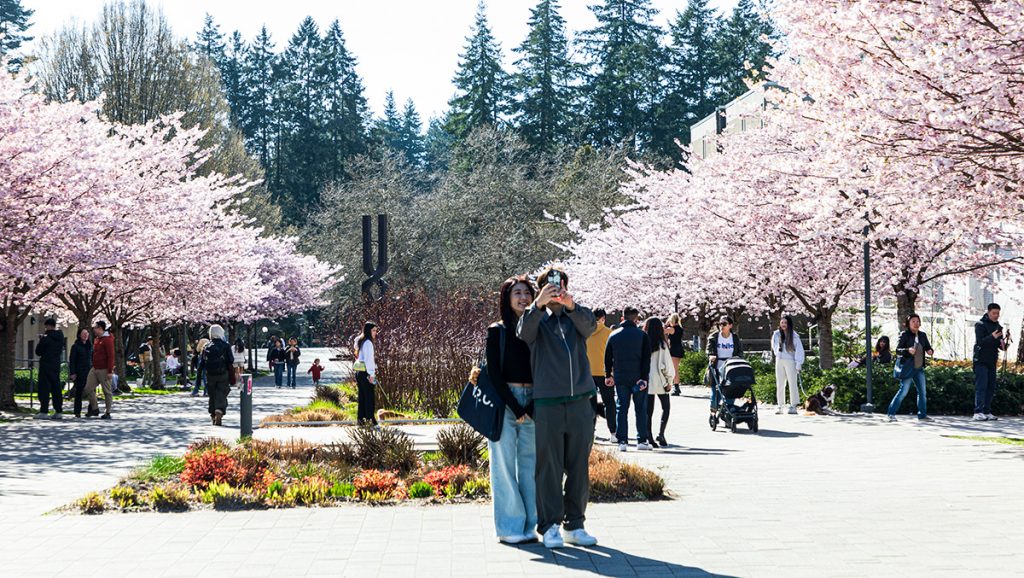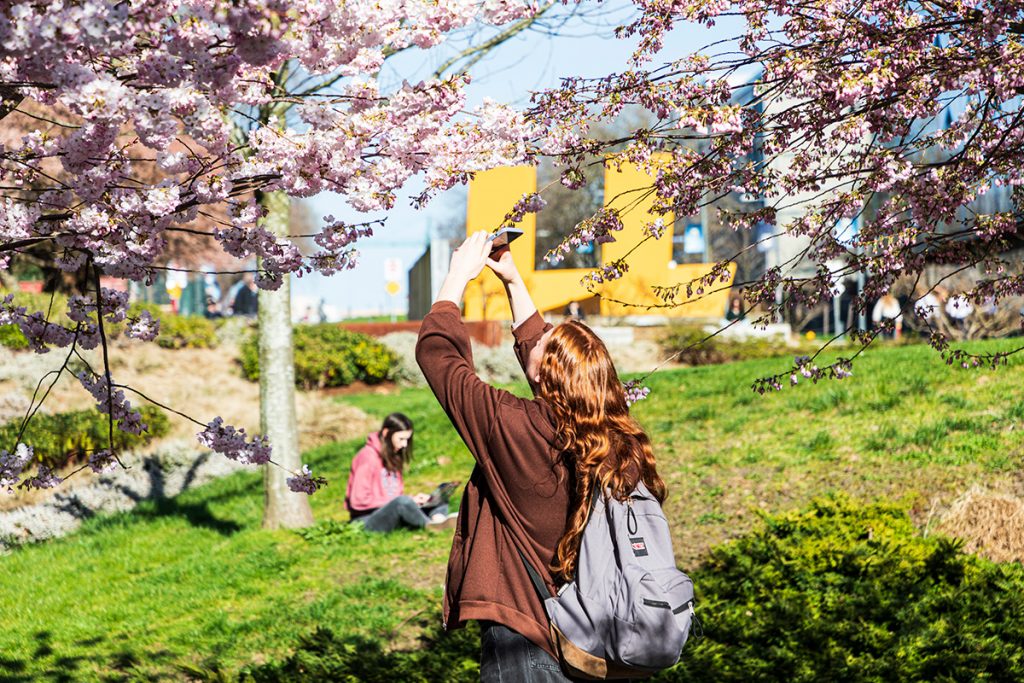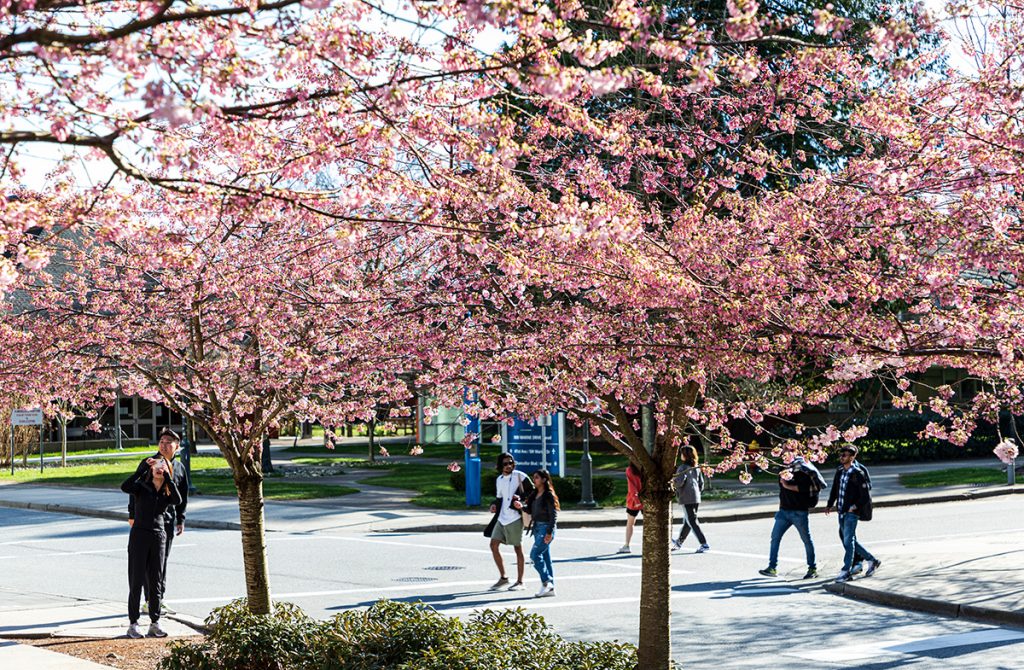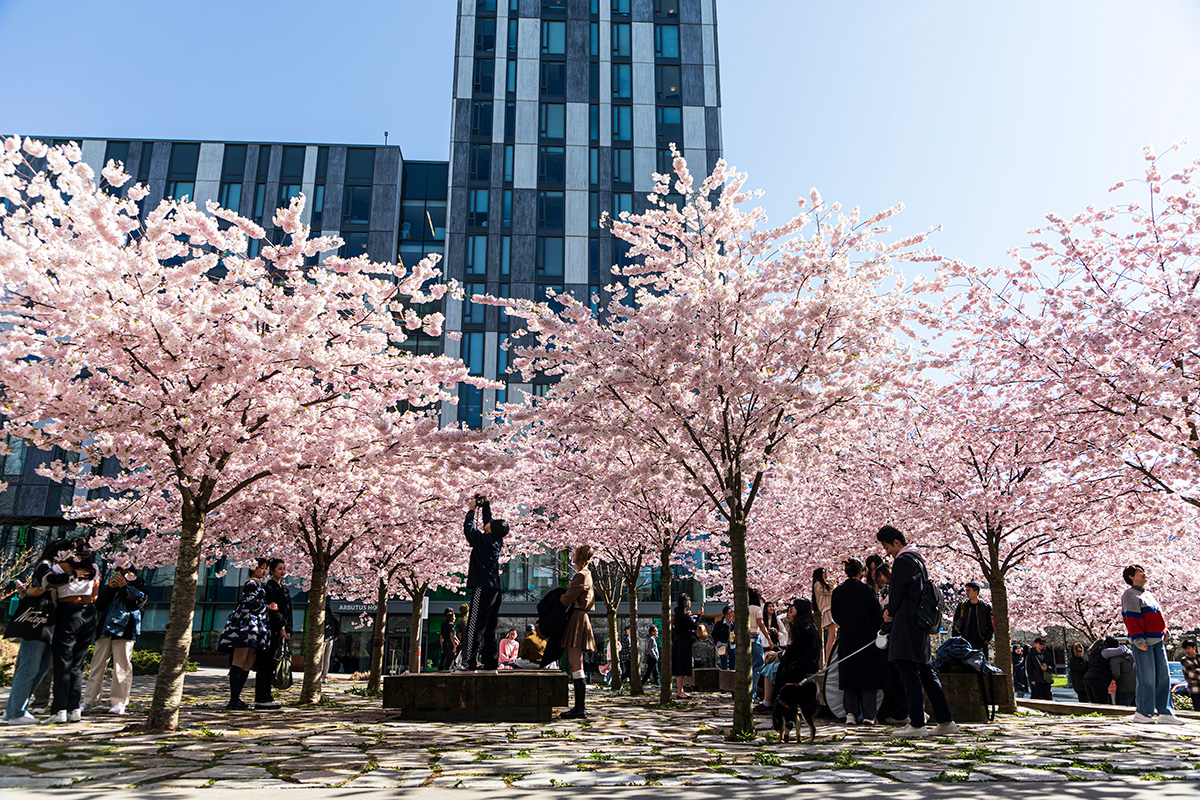The first cherry trees in the UBC area bloomed around March 17, and while the peak of the cherry blossom season was predicted for early April, it looks like it may have come early in some areas.
Dr. Elizabeth Wolkovich, a professor in UBC’s department of forest and conservation sciences, noted that February was the warmest on record globally and, in Vancouver, it almost matched a 60-year record. That made an April 3 prediction unsurprising.

The prediction is four days earlier than last year. UBC and George Mason University in Virginia organize an international Cherry Blossom Prediction Competition. It brings together researchers and citizen scientists from around the world to predict the blossom time in Vancouver; Washington D.C.; Kyoto, Japan; New York City; and Liestal-Weideli, near Basel, Switzerland.
With the trees in flower, it’s the time when residents and students out for a walk use their phones to photograph the blooms in all their splendour. There are about 20 varieties of cherry on campus and 55 varieties in and around Vancouver. Akebono, Kanzan, and Shirofugen trees are the three most common on campus.

Douglas Justice, the associate director of horticulture and collections at the UBC Botanical Garden, says the Akebono trees bloom first, followed about a week or two later by the Kanzan trees. The show closes when the Shirofugen variety blooms a week or two after Kanzan.

While flowering cherry trees can be admired in many places on campus, some areas are particularly worth visiting:
- Nitobe Memorial Garden: It’s a cooler area, and the trees usually bloom a week later than in other parts of the campus, Justice says.
- Asian Centre—outside Nitobe Memorial Garden
- Chan Centre for the Performing Arts
- The Lower Mall
- UBC Botanical Garden
- Old Barn Community Centre
ADA BUCUR IS A CAMPUS RESIDENT, POSSESSES A GRAPHIC DESIGN DIPLOMA, A PHOTOGRAPHY CERTIFICATE, AND OVER TWO DECADES OF JOURNALISM EXPERTISE GAINED IN HER NATIVE ROMANIA.
